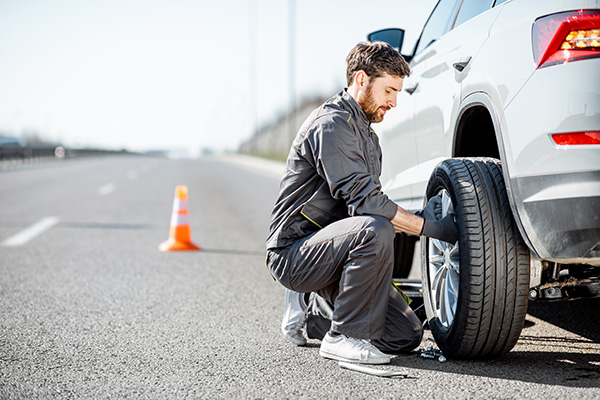
Getting a flat tire is stressful enough without making it worse by mishandling the repair. Whether you’re pulled over on the side of the road or swapping in a spare in your driveway, changing a tire seems simple—but it’s also one of the most commonly mishandled roadside tasks. The tools are basic, and the process is straightforward, yet the risks of skipping steps or doing it wrong are real.
If you ever find yourself stuck with a flat, avoiding these common mistakes will keep you safe, prevent damage to your car, and get you back on the road faster.
1. Not Pulling Over to a Safe, Level Location
In the panic of a flat, many drivers stop wherever the car gives out. But pulling over on a slope, soft ground, or near fast-moving traffic puts you in danger—and makes the job harder. A flat surface is essential for proper jack stability.
If your tire goes flat on a busy road, keep driving slowly until you can reach a flat, wide shoulder or parking lot. Yes, it might damage the tire beyond repair, but that’s a safer sacrifice than risking your safety while changing it in a dangerous spot.
2. Skipping the Parking Brake and Wheel Chocks
Even on flat ground, forgetting to engage the parking brake can allow your car to shift or roll when it’s jacked up. That small movement can knock the jack over and send your vehicle crashing down.
For extra safety, it's also smart to place wheel chocks—or even large rocks—behind the opposite tire to keep the car from rolling. A little preparation goes a long way when it comes to preventing accidents during a tire change.
3. Incorrect Jack Placement
The jack that comes with your car is designed to fit in very specific spots under the frame. Place it just a few inches off, and you risk denting the body, breaking trim, or worse—causing the jack to slip while you’re working.
Most cars have small notches or arrows near the wheel wells indicating where the jack should go. Always refer to your owner's manual if you're unsure. The correct placement keeps the car stable and protects structural components from unnecessary damage.
4. Loosening the Lug Nuts at the Wrong Time
One of the most frequent mistakes is trying to loosen the lug nuts after the car is already jacked up. When the tire is off the ground, it spins freely, making it nearly impossible to apply enough torque to loosen stuck bolts. Worse yet, you can knock the car off the jack.
Always loosen the lug nuts slightly while the car is still on the ground. You don't need to remove them completely—just break the resistance so you can unscrew them by hand once the wheel is raised.
5. Overlooking the Spare Tire’s Condition
You’d be surprised how many people go to change a flat, only to find that their spare is also flat—or missing entirely. Spare tires can lose air over time, especially if they’re never checked. And if you've switched from a full-size spare to a compact "donut," you may not realize there are limitations to how far or fast you can drive on it.
Check your spare tire’s air pressure during routine maintenance. Make sure it’s inflated properly and hasn’t aged past its usable life. If your spare has cracks, low tread, or dry rot, replace it before you ever need it.
6. Driving Too Far on a Temporary Spare
Compact spares are designed to get you to a shop—not to replace your normal tire for a week. They typically have lower speed ratings and reduced tread, which can impact braking and traction.
Driving too far or too fast on a donut spare can cause tire failure or even damage your differential, especially if the other tires are a different size. Replace your full-size tire as soon as possible, and avoid high-speed driving on a spare.
Flat tire? Need a spare checked or replaced? Come to RM Automotive in Northridge, CA. We offer full tire inspections, replacements, and safety checks to make sure you’re prepared for whatever the road throws at you.